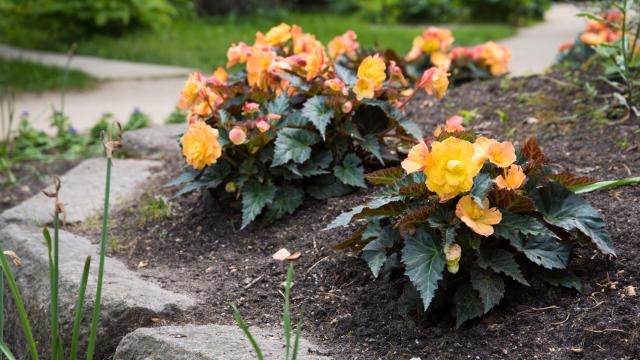Having a beautiful outdoor space is a spring and summer aspiration for many, but keeping up with all the weeding, watering, trimming, and mowing can be hard. Lots of gardeners enjoy working in their yards, but many people want the look without all the hassle. Luckily, there are plenty of plants you can successfully grow even if your thumb is decidedly brown.
How to choose east-to-grow plants
Choosing plants that are low maintenance will depend partly on your region. Consider rainfall and temperature when choosing landscaping plants to get the easiest care routine. If you’re not sure what your average rainfall or seasonal temperatures are, you can usually reach out to your local university gardening extension for advice.
For ground cover, plants with “creeping” in their name are usually a good bet. This means they will likely spread on their own with no help from you. Creeping thyme, creeping sedum, and creeping jenny are all ground cover varieties that will spread on their own with little to no intervention. They all also have beautiful flowers at some point during the season, making them pretty and attractive to pollinators, as well.
For shrubs, oak leaf hydrangeas, weigela shrubs, and juniper are all low-maintenance options. While hydrangeas and weigela are both flowering varieties, juniper is an evergreen that will add some green to your yard even in winter. Juniper comes in many varieties that can spread low to the ground or shoot up. All the care they need is the appropriate amount of sunshine and a trim once per year.
For annual flowers that will grow with very little care, plant sunflowers, bachelor’s buttons, and zinnias from seed and water them in. They don’t need much else except sunlight to thrive, and they’ll grow big, bright, showy flowers. Growing sunflowers in conjunction with a ground cover will ensure that weeding is kept at a minimum by crowding out competitors around the base of the sunflower stalk.
For perennial flowers from bulbs, crocus, daffodil, and hyacinth are among the simplest. They do well with a fair amount of rain in springtime, but after that, they really only need sunlight to thrive. These bulbs will produce flowers season after season, and can be integrated into your ground cover for a colourful, meadowlike appearance. Planting them along fence lines will reduce the amount of trimming and weeding in these areas by providing blooms and long-lasting foliage.
To add some simple interest, you can consider an ornamental grass. Grasses like red hot poker, fountain grass, and maiden grass will thrive in well-drained soil with very little maintenance. Most grasses will just need to be trimmed back once per year to keep them looking their best, and you might need to weed or mow around them once per season to avoid spreading. These clumping type grasses are good to help avoid erosion as well because their roots grow deep and hold the soil together.
If you have more shade than sun, you can grow hostas, lady ferns, and begonias with little effort. These varieties are all shade-loving and don’t need much maintenance after they’re planted. Because these plants are self-spreading, they will also come back season after season with only some trimming or bulb dividing once per season to keep coming back.

Leave a Reply
You must be logged in to post a comment.